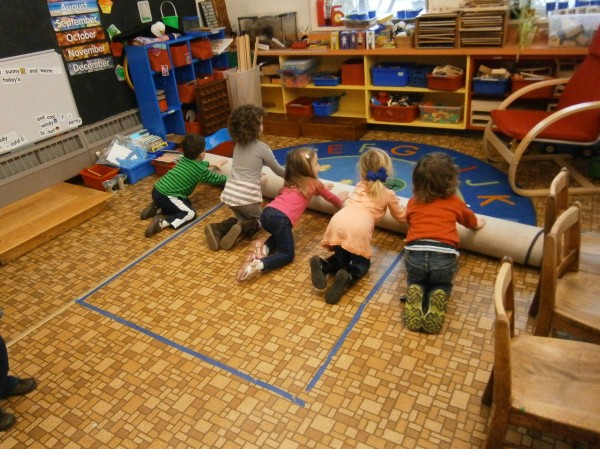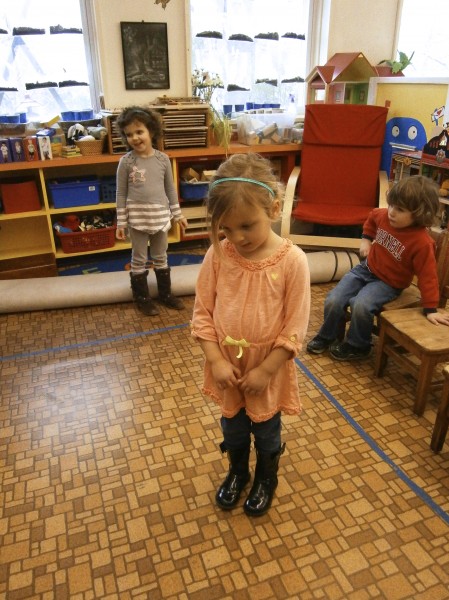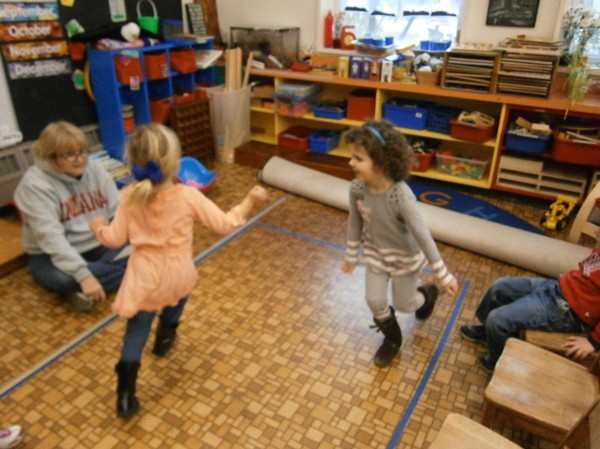Why Family, Community, Exploration? Part 3: Exploration
The way these blogs are posted, you’re reading them last first. You’ll have to scroll down to get them in sequential order. I’ve been explaining why Family, Community, Exploration are good descriptors for our program.
Some of you are thinking by now, “WAIT! What about academics? What about reading? My child needs to read!” We are big proponents of Developmentally Appropriate Practice. (DAP) I’ll get more into that later. In short however, when you bring your newborn home from the hospital, do you start thinking, “Oh no! S/he should be walking in one year! I’d better start working on her walking skills now?” Of course not. That would be inappropriate. You provide appropriate activities to encourage growth and development. What many people forget is that reading is developmental skill, like crawling and walking. Similarly, at RHCNS, we provide opportunities for developing reading skills and math skills in a developmentally appropriate way: hands-on exploration!
My eldest son (now 26) didn’t read in kindergarten. In first grade he didn’t know vowel sounds. In second grade, he struggled with “Frog and Toad are Friends.” During the summer between second and third grade, he picked up an adult paper back of the Star Wars Trilogy and announced that he was going to read it. It took him all summer, but he did it. At the end of third grade, he scored on the 99th percentile on the standardized reading test. He graduated from college Magna Cum Laude, and now in in graduate school with straight A’s for his Masters and (so far) for his PhD.
Luckily, he was growing up in a time when it was recognized that reading was developmental. As a teacher, I knew what had been stressed in college. “It all evens out in third grade.” Still, this was my son. I worried. I fretted. His teachers encouraged him, saying, he’ll get it. He got it. (The boy who didn’t read comfortably until he was 8? He now reads, writes, speaks and does research in Russian and Mongolian. He can finish a book in one day. This was my child who couldn’t recognize the numeral 7 in kindergarten!)
What he also had was a rich background of knowledge. When he was 2, he loved pirates. We read him a child’s version of Treasure Island. He astounded his pediatrician by asking her if she knew the story, and chatted away about characters, etc. We visited tall ships, examined globes and maps. At four, he was enthralled with The Hobbit and The Lord of the Rings. He could listen to and discuss the original versions.
Why am I prattling on about my son? All children are different. All children learn at different rates.
As a former teacher of students with learning disabilities and language delays, I have never taught in a classroom where everyone is on the same level. As a fourth grade teacher, I had to teach about NJ to children who varied from non-readers to the fifth grade level. I know how to adapt. I know how children learn.
Exploration is important, because it gives children opportunities to experiment, touch, think and learn. Three year olds learn from five year olds, and vice versa. They become confident learners. They believe in themselves and what they can accomplish.
I’m also constantly exploring new ways to challenge the children. Here is an example of a fantastic activity I tried after reading Vivian Gussin Paley’s book, The Boy Who Would Be a Helicopter, The Uses of Storytelling in the Classroom.
Here is a sample of one of our youngest student’s stories, and how it was performed.
“Once upon a time there was a little girl who was lonely and sad because she wanted her mom to come back. She turned on the lights but the power runned out but the good bear didn’t have any lights ’cause all the stores were closed. She was so mean to her and chased her then because she wanted to eat her. She chased her around the preschool. The little girl made a big hole and the bear fell in and she got more upsetter and she made another hole at the preschool and she was happy again and she wanted to jump on her bed again and she said yes and she put a headband on and put a headband on the bear too.”
First the children roll up our rug to reveal our “stage.”
This takes a LOT of cooperation and teamwork!
As I read the child’s story, the children acted it out. Here’s the little girl being lonely and sad, wanting her mom to come back.
The bear is chasing her around the preschool!
I love so many things about this activity. The children were empowered by hearing their stories read aloud. They “directed” the other actors. What really amazed me was how many of my “quietest” ones came to life! I saw confidence, pride, imagination and laughter. We explored the spoken word, the written word and discovered new ways to share our ideas. The ones who could read read their own stories. The “authors” discussed sequencing, and how the characters felt. Children would brainstorm how to be a castle. Or a rock. Was the shark nice or mean?
There was so much to explore!


